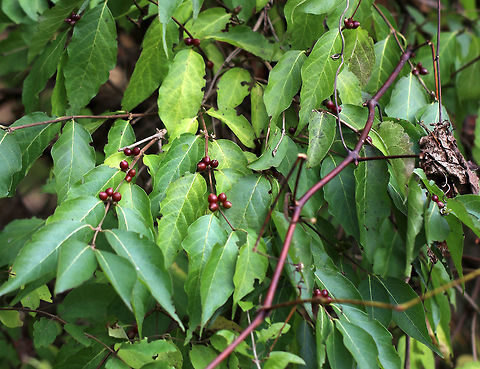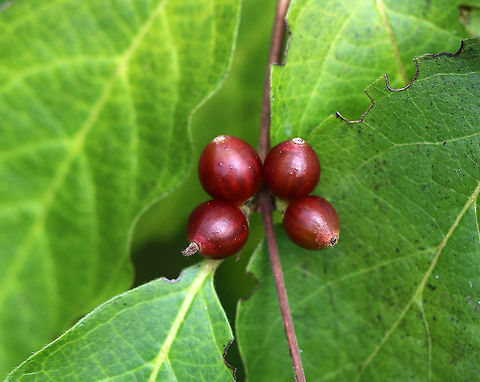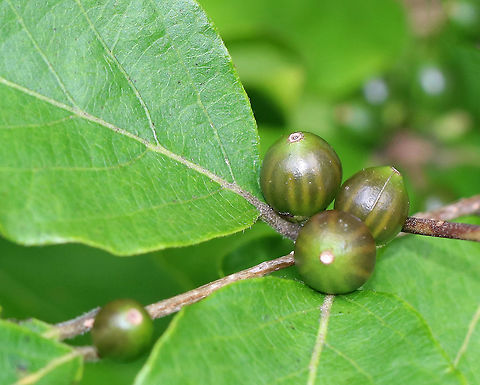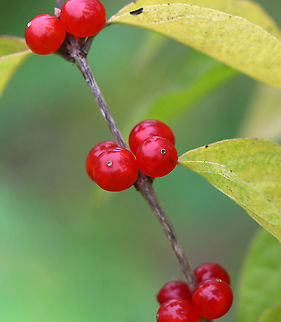
Appearance
The plant is a large, deciduous shrub that grows a maximum of 6 m tall with stems of a maximum of 10 cm in diameter. The leaves are oppositely arranged, 5–9 cm long and 2–4 cm broad, with an entire margin, and with at least some rough pubescence. The flowers are produced in pairs, and commonly several pairs are produced together in clusters; they are 2 cm long, have two lips, begin white and later turn yellow or pale orange in color; they bloom from middle of spring to early summer. The fruit is a bright red to black, semi-translucent berry, 2–6 mm in diameter, that contains numerous small seeds; they ripen in autumn and are eaten by birds, which disperse the seeds in their droppings.
Naming
The specific epithet "''maackii''" is derived from Richard Maack, a Russian naturalist of the 19th century. The common name "Amur honeysuckle" derives from the Amur River, which demarcates the border between the Russian Far East and Manchuria in China; the native range of the species is an area surrounding the river.Some Internet sources incorrectly name the species authority as " Herder", but the correct authority is " Maxim".

Distribution
''Lonicera maackii'' is enumerated as an endangered species in Japan. It has escaped from cultivation and naturalized in New Zealand and the eastern United States; in the woodlands of the latter it is a significant invasive species.
Habitat
It grows rapidly and prefers shady habitats such as woodland understories, neglected urban areas, and fence rows. It can form very dense thickets.References:
Some text fragments are auto parsed from Wikipedia.